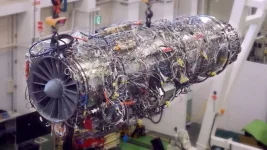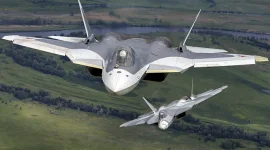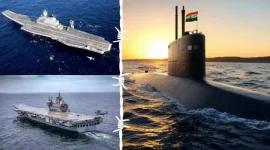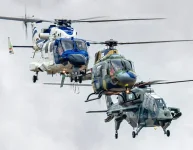- Views: 4K
- Replies: 26
The development of a fifth-generation fighter jet is one of the most complex challenges in modern defence, and selecting the right engine is critical to success.
India's ambitious Advanced Medium Combat Aircraft (AMCA) program, which aims to deliver a domestically built stealth fighter to the Indian Air Force by the mid-2030s, recently concluded a high-stakes search for its advanced Mk2 variant engine.
Among the top contenders was a technologically advanced proposal from Japan. In mid-2025, Tokyo offered its cutting-edge IHI XF9-1 turbofan engine, not just for purchase, but for co-development and local production in India.
Despite the offer's alignment with India's 'Aatmanirbhar Bharat' goals, it was ultimately set aside. A deeper look reveals that the Japanese engine, while impressive, was a poor fit for the AMCA due to critical technical, dimensional, and strategic factors.
An Impressive but Ill-Fitting Offer
The Japanese proposal was first formally discussed during a Defence Ministers’ meeting in Delhi in May 2025.Japan's Acquisition, Technology & Logistics Agency (ATLA) and IHI Corporation presented the XF9-1 as the ideal solution for the AMCA Mk2, which requires a powerful engine in the 110-130 kilonewton (kN) class.
The offer was comprehensive, including full technology transfer (ToT), shared intellectual property rights (IPR), and an invitation for India's Gas Turbine Research Establishment (GTRE) to review the technology in Japan.
On paper, the XF9-1 engine's specifications are remarkable.
Designed as a "high-power slim engine," it delivers over 107 kN of dry thrust (without afterburner) and a massive 147 kN with its afterburner. This is significantly more powerful than the 98 kN thrust of the General Electric F414 engine that will power the initial AMCA Mk1.
Furthermore, the Japanese engine is packed with next-generation features. It uses advanced materials like ceramic matrix composites to withstand extremely high turbine temperatures around 1,800°C.
It also generates 180 kW of electrical power, a feature designed to support future systems like AI-driven avionics and laser weapons. Its three-dimensional thrust-vectoring nozzle also promised superior agility, putting its technology on par with engines used in top-tier fighters like the F-35.
The Deal-Breaker: A Problem of Size
Despite these advantages, engineers at India's Aeronautical Development Agency (ADA) faced a fundamental integration problem.The AMCA's airframe was designed around the compact dimensions of the GE F414 engine, which measures approximately 3.9 metres (154 inches) in length and 0.89 metres (35 inches) in diameter.
While the XF9-1's 1-metre diameter was considered manageable, its length proved to be the deal-breaker. At 4.8 metres long, the Japanese engine is nearly a full metre longer than the F414.
Fitting the XF9-1 would have required a complete and costly redesign of the AMCA's rear fuselage and engine bay.
This major structural change would have delayed the program by years, increased its overall cost, and likely compromised the aircraft's carefully designed stealth profile, weight distribution, and internal fuel capacity.
The AMCA has an aggressive timeline, with prototype flights planned for 2029 and induction by 2035. The XF9-1 was simply not a "drop-in" replacement.
A Case of "Overkill" and Strategic Risk
Beyond the physical mismatch, the XF9-1 was also deemed too powerful for India's needs. Its 147 kN thrust far exceeded the AMCA Mk2's 120 kN requirement.While this may seem like an advantage, such excessive power, or "overkill," can be inefficient for a medium-weight fighter, putting unnecessary strain on the airframe without providing a proportional benefit.
Broader strategic factors also played a role. Japan has since become a core partner in the Global Combat Air Programme (GCAP), a multinational project with the UK and Italy to build a sixth-generation fighter.
With Japan's resources and focus shifting to developing a new engine with partners like Rolls-Royce, Indian officials had valid concerns about Tokyo's long-term commitment to the separate XF9-1 project.
India could not risk a repeat of its own Kaveri engine program, which suffered from decades of delays.
The "Perfect Fit" Solution from France
In July 2025, India announced it had selected France's Safran as its partner. The French proposal, valued at around $7 billion, involves co-developing a new 120 kN engine perfectly tailored to the AMCA's needs.Crucially, the Safran engine is being designed to "seamlessly fit" within the existing F414-based engine bay, requiring only minor modifications. This decision saves invaluable time and resources for the ₹61,000 crore AMCA program.
The deal includes a 100% transfer of critical technologies, including the complex single-crystal turbine blades, and grants India full intellectual property rights.
The timeline aligns perfectly with India's goals, targeting the first engine test flight by 2028 and full-scale production by 2035.
This new engine is also expected to be scalable, allowing it to power the Indian Navy's future Twin-Engine Deck-Based Fighter (TEDBF), securing India's combat aviation future for decades to come.





